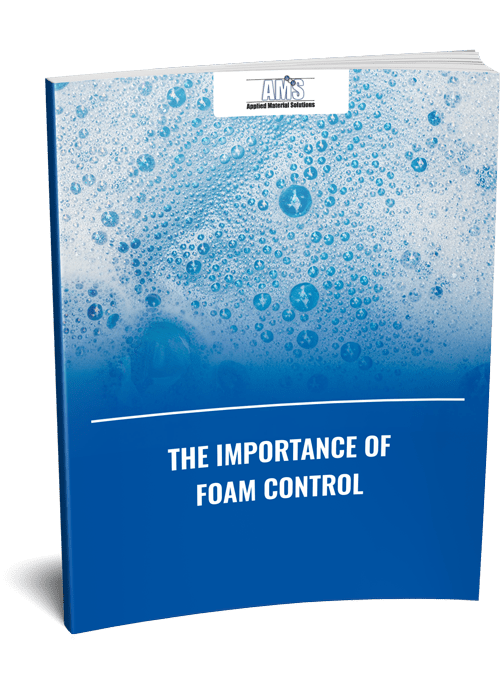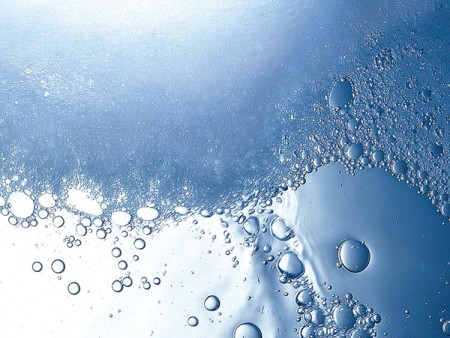Anti-Foam Control Solutions-- Eco-friendly Foam Control Technologies
Anti-Foam Control Solutions-- Eco-friendly Foam Control Technologies
Blog Article
Exploring Various Sorts Of Anti-Foam Control Solutions for Numerous Industries
The management of foam in industrial procedures is an essential aspect that can influence both product quality and operational performance throughout numerous industries. Various markets, such as food and beverage, pharmaceuticals, and wastewater therapy, face one-of-a-kind obstacles associated with foam development, necessitating customized anti-foam options. From silicone-based agents to ecologically friendly alternatives, the option of ideal control procedures varies substantially. Understanding these differences is necessary for enhancing processes and ensuring conformity with market standards. What effects do these varying services have for operational techniques and ecological considerations?
Understanding Foam Formation
Foam formation is a complicated physical sensation that occurs when gas is caught within a liquid, producing a stable structure of bubbles. This procedure is influenced by different variables, including the properties of the fluid, the nature of the gas, and exterior conditions such as temperature and stress (Anti-Foam Control Solutions). The security of foam is mostly determined by the surface tension of the fluid and the thickness, as these residential properties determine just how conveniently bubbles can continue and form
In several commercial applications, foam is an unwanted byproduct that can impede procedures, minimize efficiency, and impact product high quality. The development of foam is usually exacerbated by frustration, mixing, or chemical responses, resulting in raised functional obstacles. Comprehending the systems behind foam formation is important for establishing reliable control methods.

Kinds Of Anti-Foam Agents
Various types of anti-foam agents are made use of across industries to fight the difficulties postured by foam development. These representatives can be broadly categorized into two primary types: non-silicone-based and silicone-based anti-foam agents.
Silicone-based anti-foam agents are extremely reliable as a result of their unique homes. They are composed of polydimethylsiloxane (PDMS) and can considerably minimize surface area stress, permitting fast foam collapse. Their security at high temperature levels and in various pH atmospheres makes them appropriate for diverse applications, including manufacturing and chemical handling.
On the various other hand, non-silicone-based anti-foam representatives include organic compounds such as fats, esters, and waxes. These representatives usually work as ecologically pleasant options to silicone-based products. They usually work by providing a physical barrier that disrupts foam development. Non-silicone agents are usually utilized in applications where silicone contamination is a worry, such as in specific pharmaceutical procedures.
Additionally, some anti-foam agents incorporate both silicone and non-silicone components to enhance performance across details conditions. Comprehending the unique features and applications of these anti-foam representatives is crucial for selecting the appropriate service for foam control obstacles in various industrial setups.
Applications in Food and Drink
In the food and drink industry, efficient foam control is vital to making certain item top quality and procedure effectiveness. Too much foam can bring about functional difficulties, such as devices overflows, decreased processing capacity, and inconsistencies in product texture. Various applications within this sector, consisting of developing, dairy handling, and juice manufacturing, demand tailored anti-foam remedies to resolve certain frothing concerns.
For example, in developing, foam stability is essential for both the quality of the beer and the performance of the brewing procedure. Anti-foam agents are used to lessen unwanted foam during fermentation and product packaging, making sure a smoother process and maintaining you can try these out wanted flavors. Similarly, in milk processing, the manufacturing of products like yogurt and cheese calls for cautious foam management to protect against spillage and maintain structure.
In juice manufacturing, foam can block filtering procedures, affecting return and quality. Right here, the application of ideal anti-foaming agents can maximize production prices and enhance item appearance - Anti-Foam Control Solutions. Generally, selecting the ideal anti-foam control solutions customized to the one-of-a-kind demands of each application is essential for preserving top quality and efficiency in the food and drink sector
Solutions for Pharmaceuticals
Effective management of foam generation is important in the pharmaceutical market, where accuracy and purity are vital. Foam can disrupt numerous procedures, including mixing, purification, and sanitation, potentially compromising item top quality and efficacy. As a result, the choice of ideal anti-foam solutions is important to preserve functional efficiency and regulatory compliance.
Silicone-based anti-foam representatives are extensively made use of due to their effectiveness and compatibility with a series of pharmaceutical formulas. These agents work by minimizing surface tension, thus destabilizing the foam structure. Furthermore, non-silicone options, such as fatty acids and natural oils, are acquiring traction for pop over to these guys their eco-friendliness and biodegradability, lining up with market trends toward lasting techniques.
It is critical to consider the specific application when picking an anti-foam remedy, as the solution has to not detrimentally influence the energetic components or the end product. Compatibility with cleansing and sterilization processes is crucial to make sure that the anti-foam agents do not present pollutants. Constant monitoring and screening of foam control procedures can enhance efficiency, making certain that pharmaceutical processes remain optimum and compliant with stringent sector criteria.

Wastewater Treatment Techniques
As industries progressively focus on sustainability, carrying out efficient wastewater treatment methods has actually ended up being necessary for minimizing ecological effects. Wastewater therapy is a critical process that ensures the safe disposal or reuse of commercial results, hence lessening contamination and conserving water resources.
One primary strategy consists of making use of organic treatment methods, such as triggered sludge procedures, which use microorganisms to damage down natural pollutants. This method is usually complemented by advanced purification and sanitation techniques, ensuring the effluent fulfills regulative standards.
Furthermore, chemical treatment alternatives, such as coagulation and flocculation, are utilized to remove put on hold solids and dissolved materials. The combination of anti-foam representatives is crucial in this context, as foam can hinder therapy efficiency and make complex phases of explanation and separation.
In addition, membrane technologies, consisting of reverse osmosis, are gaining grip due to their capacity to produce high-grade effluent appropriate for reuse in various applications. Generally, a combination of these methods tailored to certain sector needs can dramatically enhance the effectiveness of wastewater treatment, contributing to an extra lasting future.
Final Thought
Reliable foam control is essential across numerous markets to boost this content item quality and process efficiency. The option of ideal anti-foam representatives, whether eco-friendly or silicone-based non-silicone choices, plays an essential function in dealing with details frothing difficulties run into in food and drink handling, pharmaceuticals, and wastewater therapy - Anti-Foam Control Solutions. Continued exploration of varied anti-foam options will certainly facilitate better operational outcomes while ensuring ecological conformity and source recuperation, thus adding to lasting techniques within these sectors
Different industries, such as food and drink, drugs, and wastewater therapy, face unique challenges related to foam formation, necessitating customized anti-foam services. Different applications within this market, including developing, dairy products processing, and juice production, demand tailored anti-foam solutions to address specific foaming concerns.
Anti-foam agents are employed to minimize undesirable foam throughout fermentation and product packaging, making certain a smoother process and preserving preferred flavors. These agents work by decreasing surface stress, consequently destabilizing the foam structure. The choice of ideal anti-foam representatives, whether green or silicone-based non-silicone options, plays a vital function in addressing details lathering challenges run into in food and beverage processing, drugs, and wastewater treatment.
Report this page